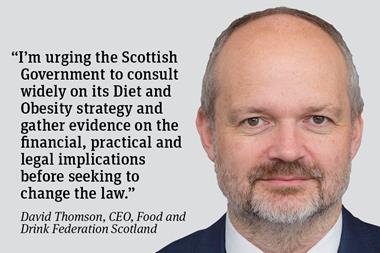The retail sector has come a long way in becoming more environmentally sustainable. The latest step is to get rid of HFC refrigerants - a major contributor to global warming.
On 15 October last year, the Kigali Amendment to the Montreal Protocol set in motion regulations that would phase out HFCs completely.

In response to the historic amendment and EU F-gas regulation, the food retail sector made the inspiring choice to replace HFCs with natural alternatives, rather than a stop-gap compromise that could face similar phase-out regulation in a few years. But the question I have is whether we are exploiting this enormous opportunity to its fullest? Are we grasping this chance to not only replace harmful HFCs with natural alternatives, but also to consider how we provide cooling in a far more fundamental way that will deliver maximum long-term benefits for the environment and business performance?
Having just launched a report with the University of Birmingham analysing this issue, I am not sure we are.
As the pressure to change mounts, many companies are keen to make a rapid choice about their strategy. But it is also extremely important that the right choices are made. The refrigeration technologies adopted today will be in service for up to 15 years.
Despite the time pressures, that choice must involve consideration of more than just which refrigerant is used. It needs to factor in which system provides the optimum long-term solution, which is sustainable in every sense. CO2 refrigeration is the popular choice, but not always the right one. As natural alternatives to HFCs are considered, there are two primary solutions available - CO2, and hydrocarbons such as propane. So far, most supermarkets seeking to phase down HFC refrigerants have chosen CO2 systems, and only a handful such as Waitrose opted for hydrocarbon integral systems.
It’s entirely understandable why retailers are jumping on the CO2 bandwagon: the architecture of CO2 refrigeration systems is similar to the HFC systems they replace, and CO2 has a global warming potential (GWP) of only one, nearly 4,000 times less than HFCs.
However despite these benefits, the research found retailers could be missing out on significant cost savings by opting for CO2, rather than hydrocarbon systems. Because the latter are far more like a domestic fridge, they can be cheaper to install, easier to maintain and more energy efficient.
In fact, independent analysis cited in the report found a supermarket could save up to £45,600 per store over a 10-year period by opting for a hydrocarbon system. That is the kind of savings that could get your CEO’s attention.
Rather than just replacing HFCs with the first solution we are comfortable with, we should try to anticipate how natural refrigerants can help tackle the broader environmental and business challenges.
Eric Winandy is director of integrated solutions for Emerson Commercial and Residential Solutions Europe



















No comments yet